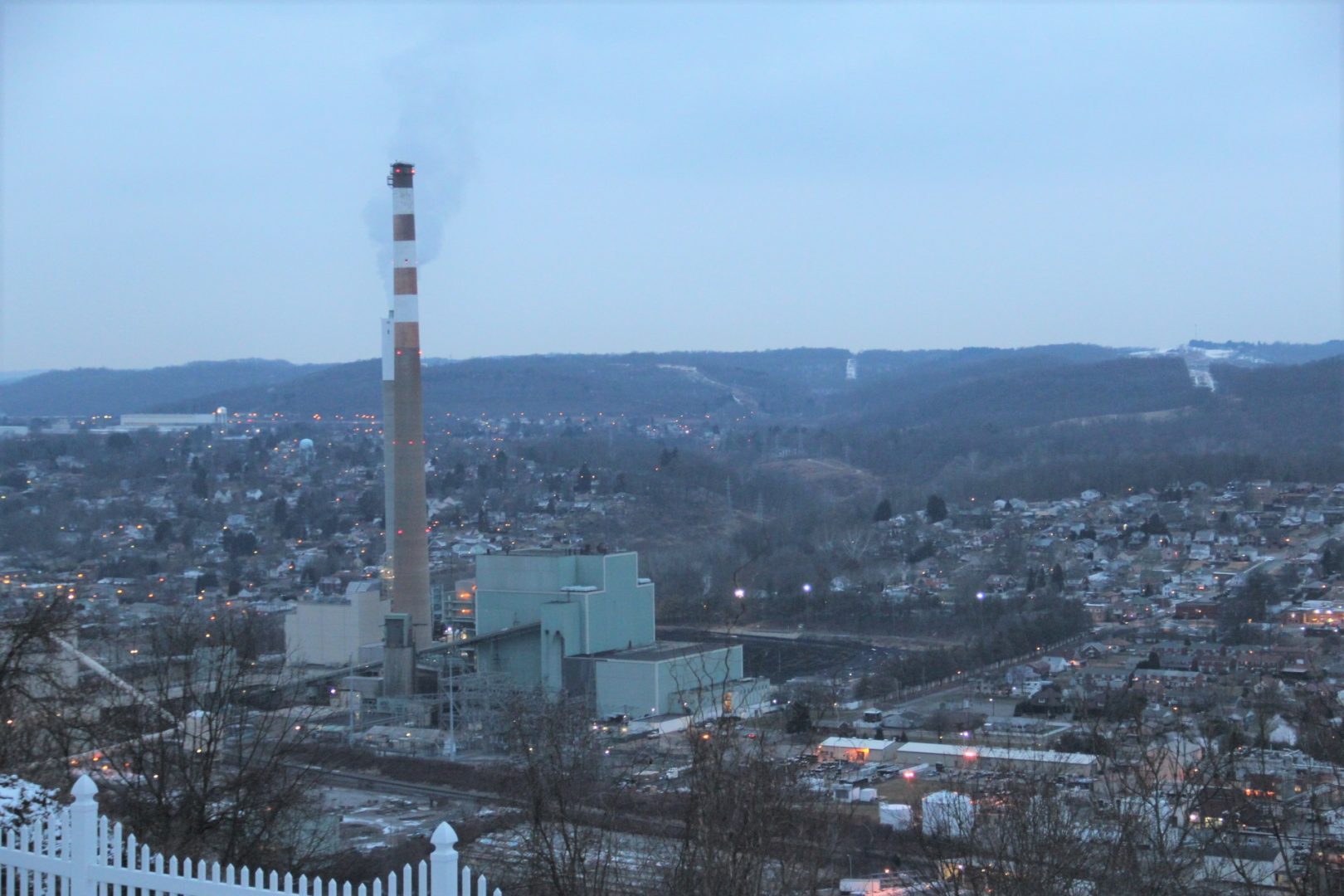
The coal-fired Cheswick Generating Station produces electricity northeast of Pittsburgh.


The coal-fired Cheswick Generating Station produces electricity northeast of Pittsburgh.

The coal-fired Cheswick Generating Station produces electricity northeast of Pittsburgh.
A new study from Penn State shows Pennsylvania could avoid billions of dollars in health damages by joining a regional cap and trade program targeting power plant emissions.
But other states may need to address an increase in damages because of the move.
The team at Penn State used four types of damage estimates to find that the commonwealth could reduce health impacts caused by power plant pollution by between $18 and 40 billion dollars over the next nine years by joining the Regional Greenhouse Gas Initiative (RGGI). That’s compared to a scenario in which the state doesn’t join RGGI.
Those savings would come in Pennsylvania and beyond from decreased rates of respiratory illnesses, like asthma, that then lead to fewer hospitalizations, prescriptions, and fewer missed work days.
The findings show higher health co-benefits than the Department of Environmental Protection’s modeling, which was done by a private company. DEP says benefits from reduced sulfur dioxide and nitrogen oxide emissions would reach up to $6.3 billion by 2030. Its model anticipates a faster rate of coal plant retirements due to economic factors outside RGGI than the Penn State researchers.
The Penn State study also found that between 30 to 50 percent of Pennsylvania’s avoided damages will be taken up by other states that share the 13-state electric grid region overseen by PJM. That would still be a net benefit for the entire region, but the benefits won’t be uniform.
Wei Peng, an Assistant Professor of International Affairs and Civil and Environmental Engineering who worked on the models for the study, said that leakage of emission and damages across states creates an equity concern.
“Pennsylvania’s going to be the state that benefits the most from the step of joining RGGI, but at the same time, the other states may suffer a little bit,” Peng said.
Under RGGI, power plants pay for each ton of carbon dioxide they emit.
If coal plants run less in Pennsylvania because of the higher expense, those outside the state could ramp up. That could cause more local damages for the people who live there from co-pollutants, such as sulfur dioxide, nitrogen oxide and particulate matter.
The study projects that coal power in the commonwealth would fall dramatically under RGGI. By 2030, coal generation would be 38 terawatt-hours (TWh) lower than without RGGI, but states in the PJM grid outside of RGGI would increase coal power by 20 TWh.
In terms of emissions, the 2030 carbon dioxide and sulfur dioxide emissions in Pennsylvania reduce by 39.1 million tons and 49,549 tons, respectively, while states in the PJM grid outside of RGGI increase by 26.2 million tons and 22,332 tons.
It would be up to other states or the regional electric grid operator to address the displaced pollution.
Nathan Chan, who has studied RGGI at the University of Massachusetts Amherst, but who was not involved in this study, said he was surprised at how much leakage the study predicts but that the figures are consistent with previous work.
He noted the models are based on reasonable assumptions.
“And so we should think of this as guidance on the order of the magnitudes rather than exact predictions of what the emissions profile will look like,” Chan said.
He added the study looks at the damages caused by Pennsylvania plants, but not at what health effects will specifically happen in Pennsylvania. That’s an area the Penn State researchers hope to examine in the future.
The study was published in the journal Environmental Science and Technology.
StateImpact Pennsylvania is a collaboration among WITF, WHYY, and the Allegheny Front. Reporters Reid Frazier, Rachel McDevitt and Susan Phillips cover the commonwealth’s energy economy. Read their reports on this site, and hear them on public radio stations across Pennsylvania.
(listed by story count)
StateImpact Pennsylvania is a collaboration among WITF, WHYY, and the Allegheny Front. Reporters Reid Frazier, Rachel McDevitt and Susan Phillips cover the commonwealth’s energy economy. Read their reports on this site, and hear them on public radio stations across Pennsylvania.
Climate Solutions, a collaboration of news organizations, educational institutions and a theater company, uses engagement, education and storytelling to help central Pennsylvanians toward climate change literacy, resilience and adaptation. Our work will amplify how people are finding solutions to the challenges presented by a warming world.